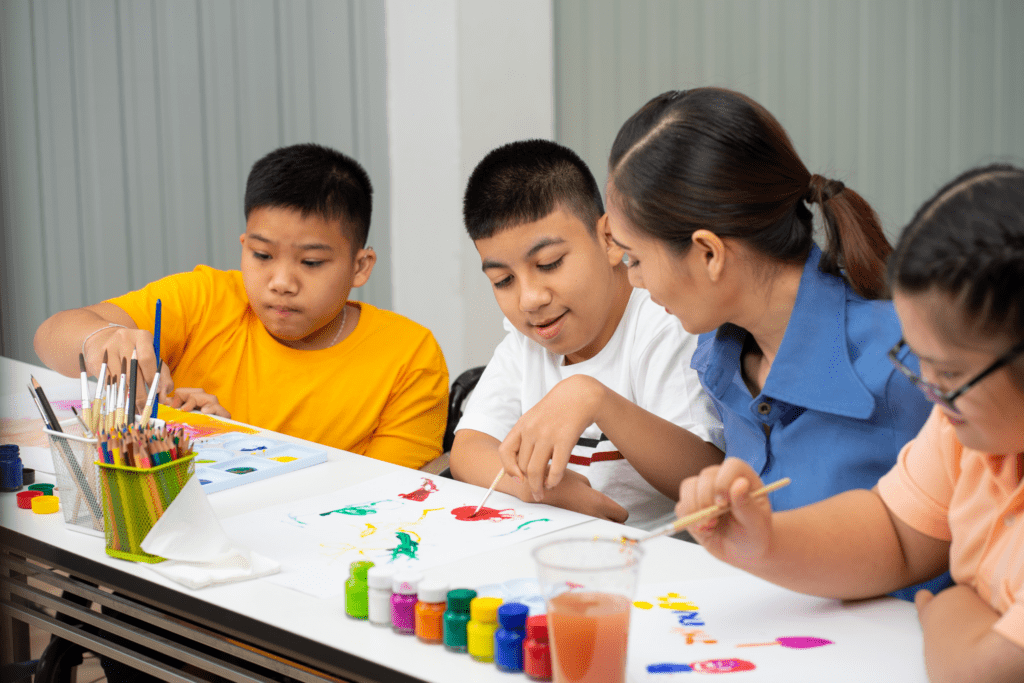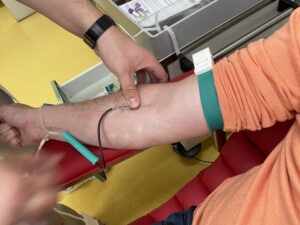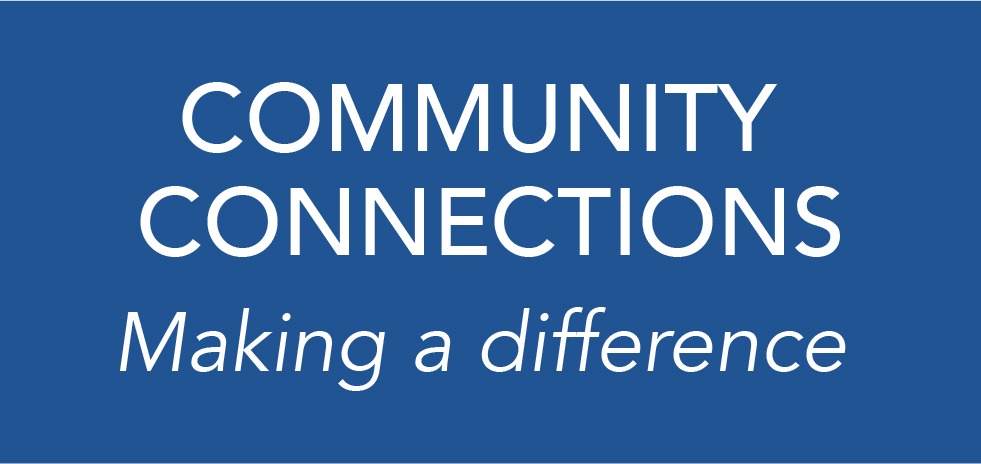It is estimated that children with learning disabilities make up 15 percent of the school-age population. About 20 percent of children with learning disabilities have attention deficit hyperactivity disorder.

What is a learning disability?
Federal law states that a learning disability (LD) is a permanent neurological disorder that may be subtle to severe. It limits the brain’s ability to store, process, and produce information and affects a person’s ability to speak, listen, read, write, or do math. A child with a learning disability has average to above average intelligence, but he or she falls below his or her academic potential to a significant degree. The current estimates indicate that children with learning disabilities make up 15 percent of the school-age population.
What are the risks factors?
The most common risk factor is family history. Less common risk factors include poor nutrition, severe head injuries, child abuse, and pregnancy-related factors. (National Center for Learning Disabilities)
Lead poisoning, infections of the central nervous system, or treatment for cancers, such as leukemia, can also increase the risk for learning disabilities.
What factors are not considered risk factors?
Blindness, visual problems, deafness, physical or motor handicaps can cause difficulties with learning, but are not a cause of learning disabilities. Likewise, intellectual disabilities (formerly called mental retardation), autism spectrum disorders, or low intelligence quotient (IQ) all may be associated with learning difficulties, but are not considered learning disabilities. Environmental, cultural or economic disadvantages do not cause learning disabilities but may co-occur with learning disabilities. Similarly, behavioral disorders or emotional disturbances may also be present with learning disabilities.
What other problems might children with learning disabilities have?
About 20 percent of children with learning disabilities also have attention deficit/hyperactivity disorder (ADHD). Children with learning disabilities may become frustrated, lose interest in school, and avoid challenges. They may have low self-esteem and emotional problems, such as withdrawal, anxiety, depression, or aggression. It is also common for children with learning disabilities to have social problems. Children with undiagnosed learning disabilities can become angry and frustrated. These feelings may lead to emotional problems.
What is dyslexia?
Dyslexia is one of the most common forms of learning disability. Dyslexia is a language-based disorder that affects reading, writing, spelling, and often handwriting. Although letter or word reversals may be a concern for children with dyslexia, they are not the primary markers for dyslexia.
Who is likely to suspect a learning disability?
The child’s parents and teachers are most likely to suspect a learning disability since they spend the most time with the child. The child’s physician may also suspect a learning disability.
What are the signs of learning disabilities?
The following signs may signal that a child has a learning disability:
- Dislike of or difficulty with reading
- Poor handwriting
- Difficulty with math
- Difficulty organizing thoughts to express what they want to say
- Memory problems
- Trouble with coordination
- Difficulty with language such as following directions, remembering words, rhyming, and expressing oneself
- Difficulty with reasoning
- Difficulty with spelling
- History of delayed speech
What are the signs of dyslexia?
The early signs of dyslexia include:
- A delay in spoken language
- Difficulty “finding” the right word
- Difficulty with rhyming
- Difficulty with short-term auditory memory
- Subtle mispronunciations, particularly of words with more than one syllable
After a child enters school, the following signs of dyslexia may appear:
- Difficulty learning the names of the letters of the alphabet
- Difficulty learning how to write the letters of the alphabet
- Difficulty learning whole words for reading and spelling
- Difficulty using phonics
- Difficulty with comprehension related to difficulty reading words
How are learning disabilities treated?
Learning disabilities are treated educationally, preferably with early intervention. An educational specialist can teach effective learning strategies to help a child overcome his or her learning problems. In addition to ensuring that schools provide diagnostic testing, federal laws require that remedial services be provided to all children who qualify for them. Private tutoring may also be beneficial to maximize progress. Repeating a grade is typically not recommended and may be associated with poor long term outcomes.
Children and their families may benefit from psychological counseling. Understanding and emotional support are needed for children with learning disabilities so they can feel good about themselves. It is also essential to provide opportunities for success in areas where the child may shine. Finally, children with learning disabilities sometimes have problems with peer relationships and may benefit from counseling to help improve their social skills.
Learning disabilities are not treated medically; however, children with learning disabilities who are also diagnosed with a co-existing disorder such as attention deficit hyperactivity disorder (ADHD) may benefit from medication. Physicians should follow the academic progress of their patients as part of their overall medical management.
What is the outlook for children with learning disabilities?
Even though children don’t outgrow learning disabilities, they can learn to adapt and improve their weak skills. If learning disabilities are identified and treated early, children with these disabilities are more likely to learn to overcome their difficulties while maintaining a positive self-image. They can also learn to develop their personal strengths and become very productive and successful adults.
Where can I find more information on learning disabilities?
- National Center for Learning Disabilities (NCLD). www.ncld.org
- National Dissemination Center for Children with Disabilities (NICHCY). nichcy.org
- LD OnLine. www.ldonline.org
- International Dyslexia Association. www.interdys.org
What should you do if you or your child’s teacher or physician suspects a learning disability?
Parents should formally request testing through their school system. Schools are required to evaluate a child (age 3 to 21) if he or she is suspected of having a disability that is affecting his or her learning or educational performance. This evaluation is provided free of charge to families and must, by law, involve more than one standardized test or procedure.
It is important that school personnel, families, and the family physician work together to establish the diagnosis and treatment plan for children with learning disabilities. The sooner learning disabilities are detected, the better, so the child can start receiving the educational help he or she needs.
What can parents do?
Parents should make sure that their child receives help for his or her learning problems. They should also monitor the child’s progress to make sure adequate improvement is being made in skill development. Parents should foster communication between outside specialists, school personnel, and the child’s physician. It is also critical that parents provide an atmosphere at home that encourages learning.





















